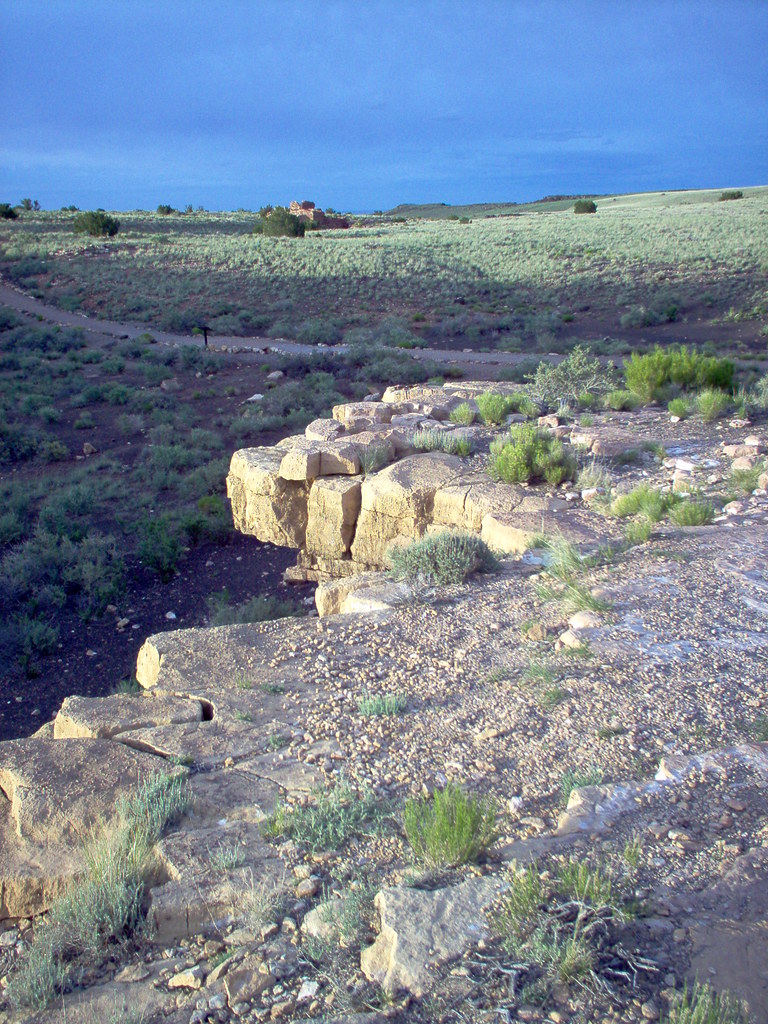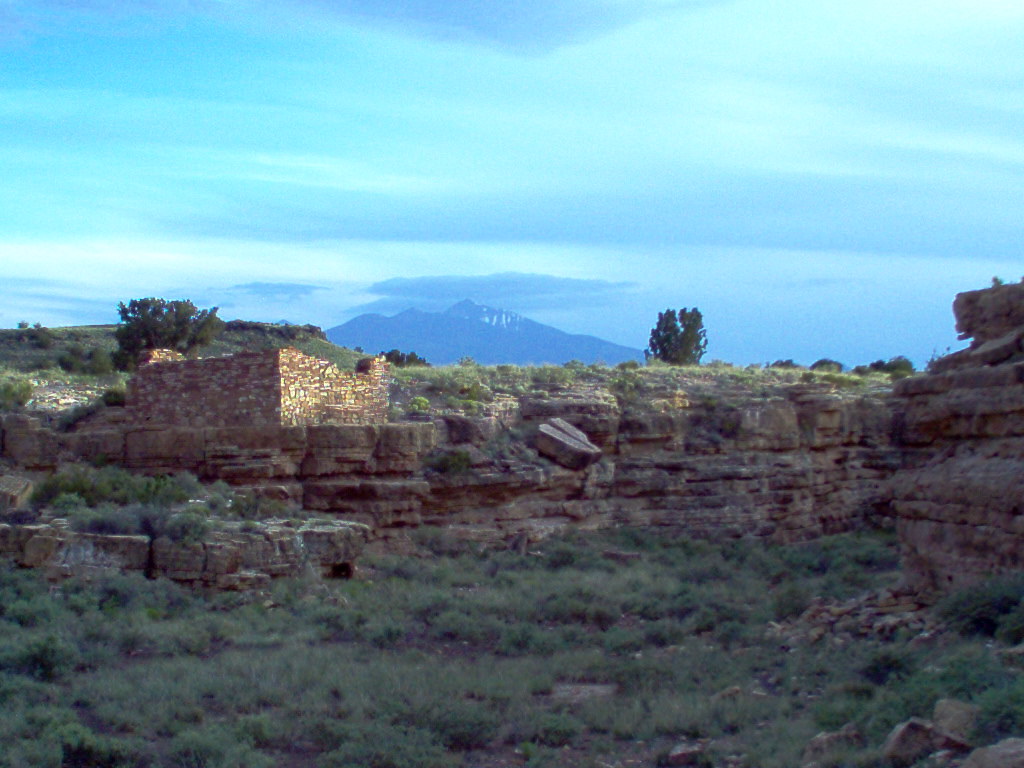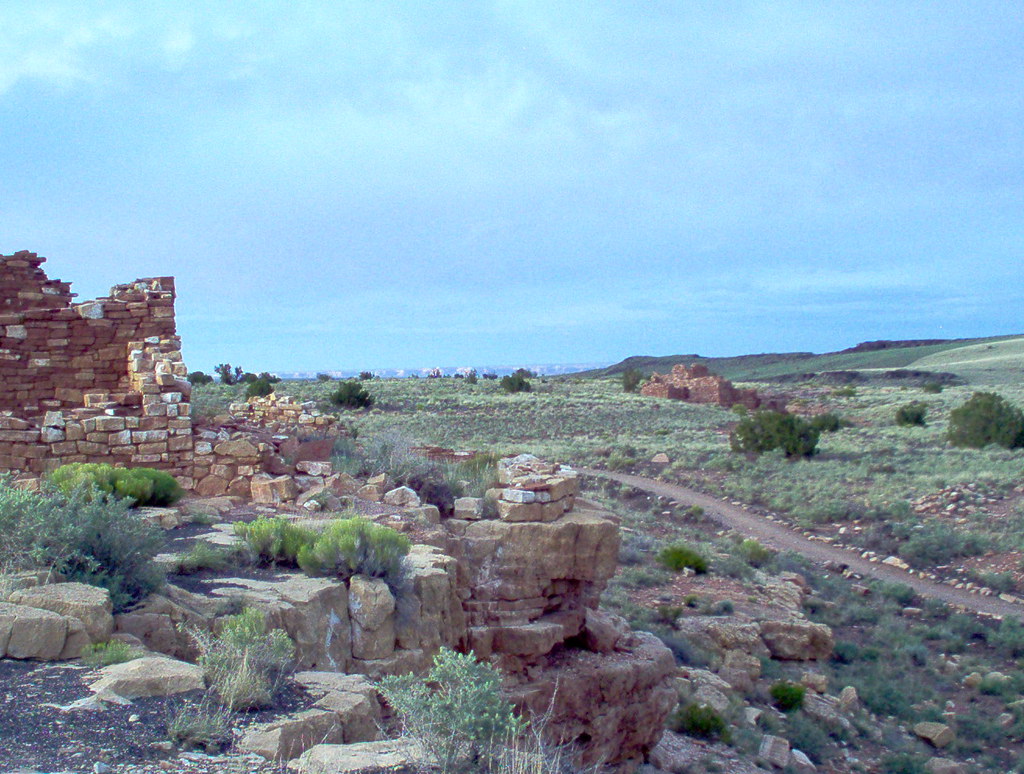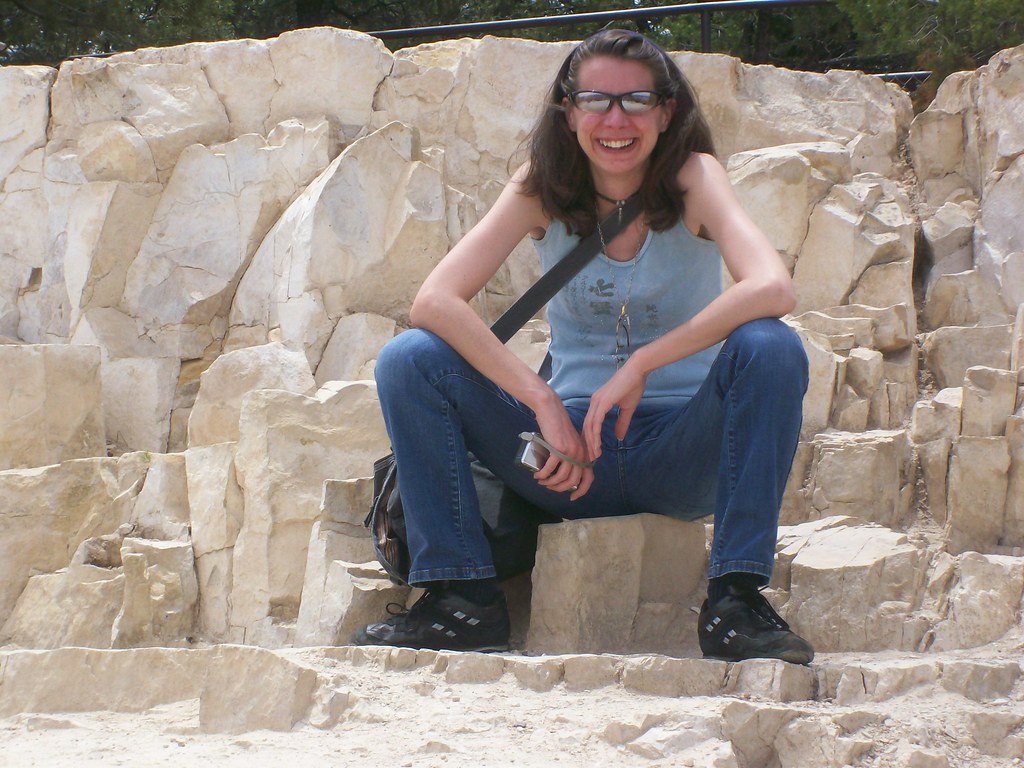Kaibab.
Just say it: kye-bab. Short. Slightly exotic. Maybe it doesn't roll off your tongue. Maybe it sounds a bit hard, truncated, abrupt. It's a Paiute word that means "mountain lying down" or "mountain inside-out." It's a good name, appropriate for a formation from which you can see a mountain that blew itself inside-out.
In a land of black volcanics, red beds, and tan dirt, it's a dramatic snowy-white in certain light, shading to a pale golden beige. It was my first experience with the ocean. It's astonishingly beautiful.
 |
| Promontory of Kaibab Limestone, with ruins in the distance |
 |
| Box Canyon Ruin, San Francisco Peaks, and the Box Canyon |
 |
| Lomaki Ruins, with the Painted Desert in the distance |
It was in a shallow pond at the bottom of a Kaibab canyon that I caught my first tadpoles. The first (and only) time I shot a rifle, I was standing on a ledge of the Kaibab, aiming at a fallen log across that self-same canyon. Hit it, too, which pissed off the boys I was shooting with - they who couldn't hit the damned thing to safe their lives. The shot echoed off the ancient sea walls, and a little puff of dust went up from the log, and the boys gasped and then grumbled, because a girl had just outgunned them. They got over it.
Later, we'd ride our horses down those blocky limestone walls, finding a sure path down. Lichen grew in shades of gray-green and brilliant orange and delicate yellow on the old stones. Sometimes, you'd come across a surface many people had walked over, and it gleamed, polished and smooth and cool to the touch. We had an old white-and-gray boulder of it in the middle of our yard. It had defeated my dad, who'd had delusions of neat and tidy landscaping. When he mowed down the weeds, he'd have to leave a little island around that boulder, which in turns became my own personal mountain to climb or a throne to perch upon, depending on what imagination required that day. And if you turned over bits of it, you might find a nest of spiders or some really brilliant velvet ants, which would scream a squeaky sound like "help!" if you flipped them gently onto their backs with a stick. Those were amazing creatures, black with their furry abdomens in bright shades of scarlet or orange. They stood out like little drops of fire against the serene cream stone.
The Kaibab provided a solid foundation for excellent childhood memories. And so you can understand why I grinned so widely, coming across a spectacular outcrop of it at the Grand Canyon:
 |
| Mi con Kaibab, snapped by my intrepid companion |
Beautiful stuff. And now that I'm older, and while perhaps not wiser but at least more well-read, I can sit upon it, gaze out over the rolling hills toward distant mountains, and dream of wine-dark seas.







1 comment:
I love the gray-green color of the brush in those pictures. I grew up and spent my adulthood in two different parts of the country where, when things are growing, they are bright green. In many parts of Arizona, there are plants that don't follow that rule.
Post a Comment